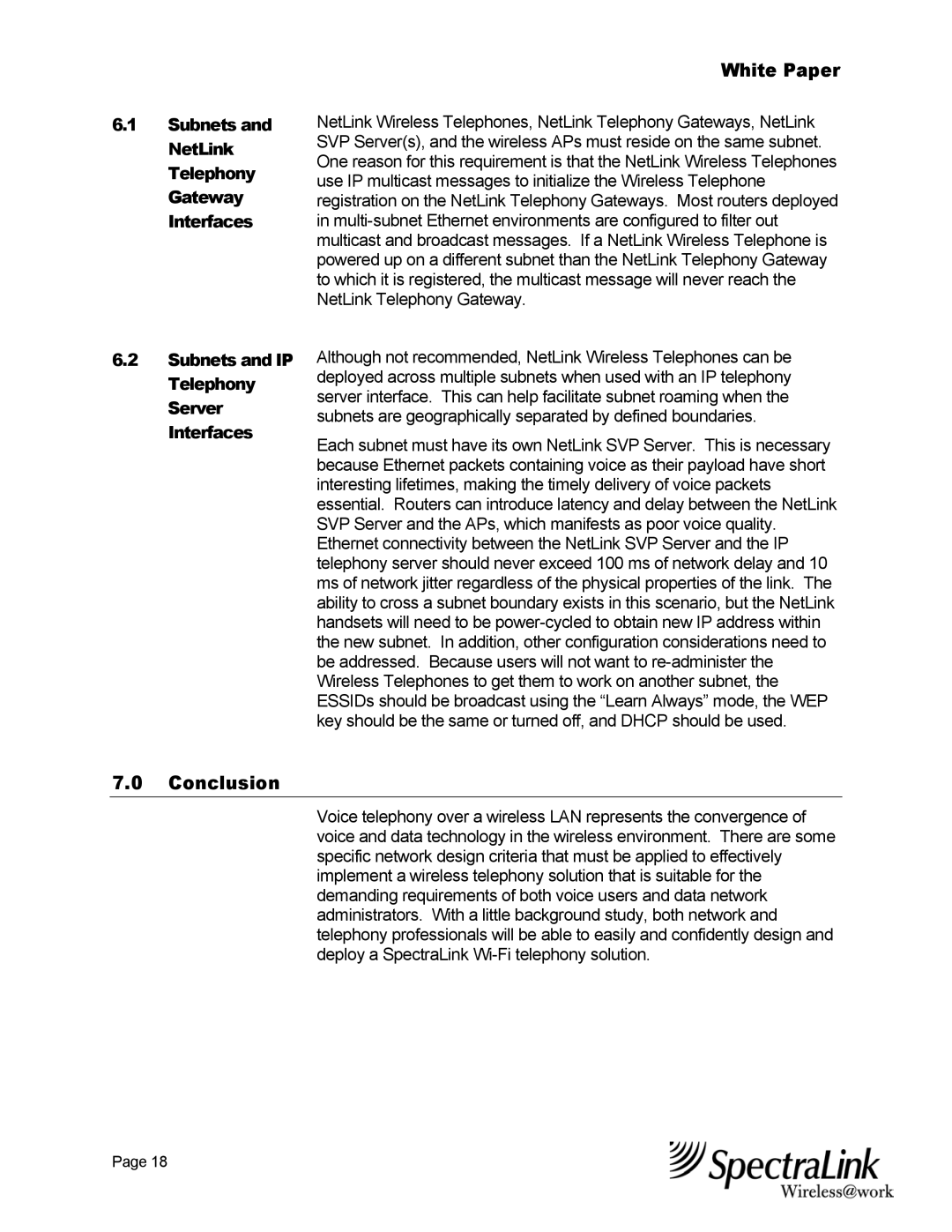
6.1Subnets and NetLink Telephony Gateway Interfaces
White Paper
NetLink Wireless Telephones, NetLink Telephony Gateways, NetLink SVP Server(s), and the wireless APs must reside on the same subnet. One reason for this requirement is that the NetLink Wireless Telephones use IP multicast messages to initialize the Wireless Telephone registration on the NetLink Telephony Gateways. Most routers deployed in
6.2Subnets and IP Telephony Server Interfaces
Although not recommended, NetLink Wireless Telephones can be deployed across multiple subnets when used with an IP telephony server interface. This can help facilitate subnet roaming when the subnets are geographically separated by defined boundaries.
Each subnet must have its own NetLink SVP Server. This is necessary because Ethernet packets containing voice as their payload have short interesting lifetimes, making the timely delivery of voice packets essential. Routers can introduce latency and delay between the NetLink SVP Server and the APs, which manifests as poor voice quality. Ethernet connectivity between the NetLink SVP Server and the IP telephony server should never exceed 100 ms of network delay and 10 ms of network jitter regardless of the physical properties of the link. The ability to cross a subnet boundary exists in this scenario, but the NetLink handsets will need to be
7.0Conclusion
Voice telephony over a wireless LAN represents the convergence of voice and data technology in the wireless environment. There are some specific network design criteria that must be applied to effectively implement a wireless telephony solution that is suitable for the demanding requirements of both voice users and data network administrators. With a little background study, both network and telephony professionals will be able to easily and confidently design and deploy a SpectraLink
Page 18
